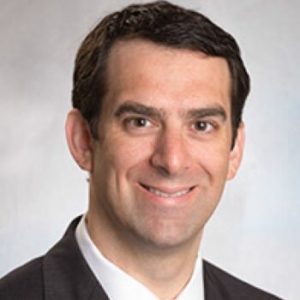
History records that the first journal club was started by Sir William Osler, MD, at McGill University in the late 19th century, though Sir James Paget referred to journal club–like groups even earlier in England.
Explore This Issue
ACEP Now: Vol 34 – No 01– January 2015Similarly, no one person can claim credit for creating the online journal club, but it is an idea that’s time has come and that took off in 2014 thanks in large part to Michelle Lin, MD, associate professor of emergency medicine at the University of California San Francisco San Francisco General Hospital, and Ken Milne, MD, chief of emergency medicine and chief of staff at South Huron Hospital, Ontario, Canada. Each has partnered their free open-access medical education (FOAM, #FOAMed) platforms with major emergency medicine academic journals.
FOAM takes the academic tradition of the journal club to the next level by including the interactive participation of the lead authors of the papers themselves. This gives learners and educators all over the world access to the minds behind the papers and allows a level of conversation and discourse that Dr. Osler and Dr. Paget could never have imagined possible. It’s another example of the promise of FOAM and the genuine advantages it can provide.
And the key to the success of this is the social component of social media. Anyone can attend from anywhere and participate in a number of different ways. Unlike traditional journal clubs, online journal clubs unfold in several venues and platforms over several days, not one hour in a conference room. Talking about important papers is cool, very 20th century. Talking about papers with the authors themselves is extremely cool, very 21st century.
This year, Dr. Lin’s (@M_Lin) popular blog, Academic Life in Emergency Medicine (ALiEM), began a partnership with the Annals of Emergency Medicine to take the journal club component of Annals online. It’s called the Global EM Journal Club, hosted by ALiEM and the Annals of Emergency Medicine.
Here’s how it works: An article featured in the print edition of the successful Annals of Emergency Medicine Journal Club (celebrating its 40th year) is chosen and promoted on the ALiEM blog, Twitter, Facebook, and Google+. Links to the article and other relevant articles/FOAM posts are provided. Then, over a several day period, anyone can comment on the article on any of these platforms (using the hashtag #ALiEMJC on Twitter).
So far, the journal club has hosted hangouts where the likes of Jeffrey Kline, MD (age-adjusted D-dimer); Ian Stiell, MD, MSc; Jeff Perry, MD, MSc (clinical decision rule for subarachnoid hemorrhage); and others have been happily placed in the hot seat.
After several days of remarkably thoughtful and nuanced posts, the climax of the journal club is a live video Google Hangout with the authors of the paper. The authors are joined by an all-star panel of EM providers, and they discuss the Annals study questions, incorporating the online comments posted in the last few days. These hangouts are recorded and posted online so anyone can access them at any time. So far, the journal club has hosted hangouts where the likes of Jeffrey Kline, MD (age-adjusted D-dimer); Ian Stiell, MD, MSc; Jeff Perry, MD, MSc (clinical decision rule for subarachnoid hemorrhage); and others have been happily placed in the hot seat.
Dr. Milne’s popular Skeptics Guide to Emergency Medicine (@theSGEM) recently joined the online journal club party, partnering with the Canadian Journal of Emergency Medicine and Academic Emergency Medicine. His new series “SGEM Hot Off the Press,” or “SGEM-HOP,” makes a reality of Dr. Milne’s dream to shorten the window between knowledge acquisition and clinical application from longer than a decade to less than one year. But Dr. Milne is taking it even further. In this series, he interviews the lead author of a brand-new paper the same week it is published. Though Dr. Milne is the archetypal polite Canadian gentleman, he isn’t afraid to ask authors tough questions.
His goal is that people not only keep up to date with the literature but that they scrutinize it and form their own opinions. After the interview is published on his podcast, comments from the FOAM world are invited. The best of these comments are then published in the print versions of these top journals. So, yes, you can tweet your way into a top journal.
Meanwhile, the so-called “flipped classroom” model of learning is making waves in the academic world. In my institution, our journal club has been combined with FOAM. We now not only read new or controversial papers, we pair them with relevant blog posts and listen to podcasts about the articles. Then we discuss the articles as well as criticism and insights from top commentators. This elevates the discussion and is another example of the merging of FOAM and classic learning modalities.
One resource that can be helpful is FOAMbase.org, a website by my co-resident Ben Azan, MD (@BenAzan), that categorizes FOAM publications by topic. FOAMbase is a great resource to quickly find high-quality FOAM that may be relevant to the paper being discussed in the journal club.
 Dr. Faust is an emergency-medicine resident at Mount Sinai Hospital in New York and Elmhurst Hospital Center in Queens. He tweets about #FOAMed and classical music @jeremyfaust.
Dr. Faust is an emergency-medicine resident at Mount Sinai Hospital in New York and Elmhurst Hospital Center in Queens. He tweets about #FOAMed and classical music @jeremyfaust.
Pages: 1 2 | Multi-Page






No Responses to “Rise of the Free Open Access Medical Education Online Journal Club”